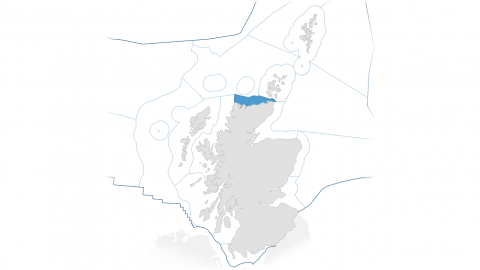The tables in this section reflect the output of the workshop (October 2019) when the pressures from human activities were assessed for the period 2014 to 2018 for the region. The summary text below the tables elaborates on some of the points that were made at the workshop.
This pressure assessment uses the FeAST classification which includes two abrasion pressures: surface abrasion & sub-surface abrasion. Some expert groups combined these as a single pressure "surface & sub-surface abrasion" whilst others focussed on using surface abrasion alone, hence there is a slight difference in handling for some regions.
The ranking of the pressures in terms of impact is a relative exercise within each region, and is not a statement of their absolute impact. Detailed comparison between regions on the basis of these relative pressure assessments is therefore not advisable.

Main pressures identified
| Priority [1] | Pressure (FeAST classification) [2] | Main healthy and biologically diverse components affected [3] | Main contributing FeAST activity /activities to pressure [4] | Associated productive assessments [5] |
|---|---|---|---|---|
| 1 | Removal of target species (including lethal) |
|
||
| 2 | Removal of non-target species (including lethal) |
|
||
| 3 | Physical change (to another seabed type) |
|
||
| 4 | Surface/Sub-surface abrasion/penetration |
|
||
| 5 | Underwater noise |
|
Other pressures identified
Footnote: the ordering of entries is alphabetical and there is no prioritisation between the pressures.
Summary from workshop
Pressures on the marine environment in the North Coast inshore area relate mostly to removal of target and non-target species. This is due to activities such as fishing using a variety of methods such as creeling and potting, scallop dredging, bottom trawling, dredging. These activities may also likely lead to physical change to the seabed via sub-surface, surface abrasion and penetration. Fishing activities include invertebrate and vertebrate species and also stock assessments do not necessarily suggest fishing beyond biological limits. Surface abrasion is also likely to occur through weather-related dragging of traps and ropes from creeling and potting activity which is widespread but at low intensity in the region. Creeling and potting may also affect non-target species through ghost fishing of lost gear and risk of entanglement in ropes. Other pressures resulting from these activities may include siltation and reduction of prey.
Introduction or spread of non-indigenous species and translocations is proposed as a potential pressure, although no clear evidence neither clear cause-effect data really exist to indicate this pressure as a strong matter of concern. Furthermore, other emerging pressures to consider are noise and litter. There is increasing evidence that a range of activities in the marine environment, such as fishing (any gear), tourism, shipping, sonar, port activities, dredging, are now leading to the prevalence of these pressures and certainly this is likely the case in this region, since these activities are prevalent here. However, clear and conclusive data allowing cause-effect relationships are missing.
It is considered that main pressures in this region relate to fishing activities, as described above. It is not suggested that these activities are not managed and indeed good data exist that could be used to compile information on changes in activities over time and link to possible direct pressures.

